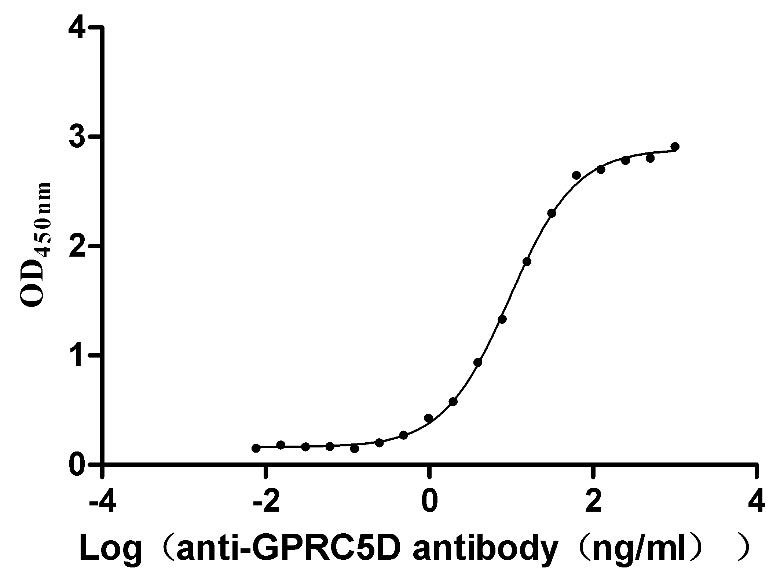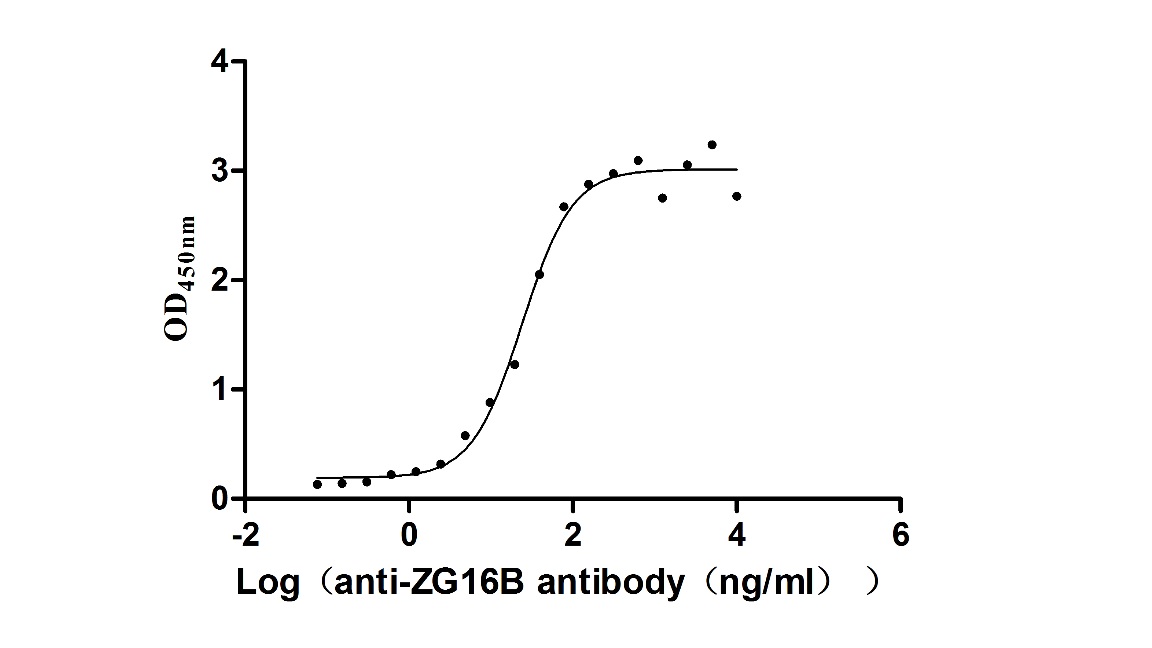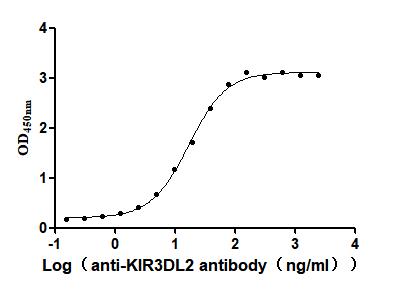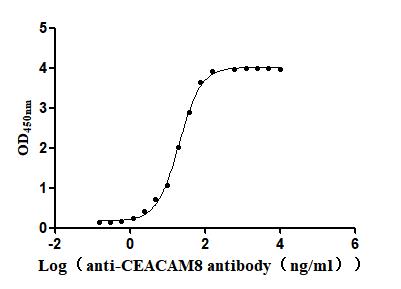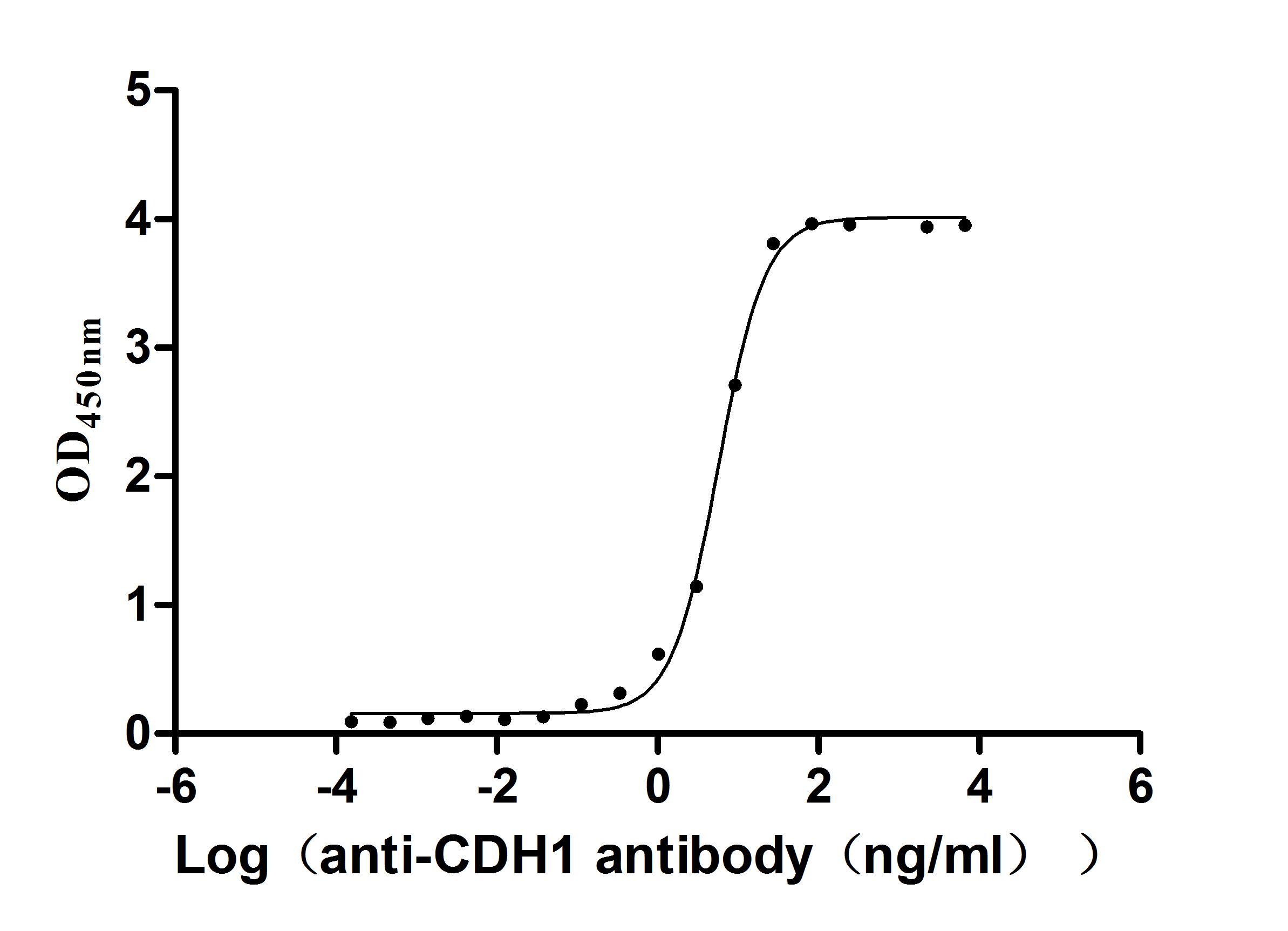Recombinant Human Fibrillin-2 (FBN2), partial
-
中文名称:人FBN2重组蛋白
-
货号:CSB-YP008457HU
-
规格:
-
来源:Yeast
-
其他:
-
中文名称:人FBN2重组蛋白
-
货号:CSB-EP008457HU
-
规格:
-
来源:E.coli
-
其他:
-
中文名称:人FBN2重组蛋白
-
货号:CSB-EP008457HU-B
-
规格:
-
来源:E.coli
-
共轭:Avi-tag Biotinylated
E. coli biotin ligase (BirA) is highly specific in covalently attaching biotin to the 15 amino acid AviTag peptide. This recombinant protein was biotinylated in vivo by AviTag-BirA technology, which method is BriA catalyzes amide linkage between the biotin and the specific lysine of the AviTag.
-
其他:
-
中文名称:人FBN2重组蛋白
-
货号:CSB-BP008457HU
-
规格:
-
来源:Baculovirus
-
其他:
-
中文名称:人FBN2重组蛋白
-
货号:CSB-MP008457HU
-
规格:
-
来源:Mammalian cell
-
其他:
产品详情
-
纯度:>85% (SDS-PAGE)
-
基因名:
-
Uniprot No.:
-
别名:CCA ; congenital contractural arachnodactyly (Marfanoid-like); DA9; FBN2; FBN2_HUMAN; fibrillin 2 (congenital contractural arachnodactyly); Fibrillin-2
-
种属:Homo sapiens (Human)
-
蛋白长度:Partial
-
蛋白标签:Tag type will be determined during the manufacturing process.
The tag type will be determined during production process. If you have specified tag type, please tell us and we will develop the specified tag preferentially. -
产品提供形式:Lyophilized powder
Note: We will preferentially ship the format that we have in stock, however, if you have any special requirement for the format, please remark your requirement when placing the order, we will prepare according to your demand. -
复溶:We recommend that this vial be briefly centrifuged prior to opening to bring the contents to the bottom. Please reconstitute protein in deionized sterile water to a concentration of 0.1-1.0 mg/mL.We recommend to add 5-50% of glycerol (final concentration) and aliquot for long-term storage at -20℃/-80℃. Our default final concentration of glycerol is 50%. Customers could use it as reference.
-
储存条件:Store at -20°C/-80°C upon receipt, aliquoting is necessary for mutiple use. Avoid repeated freeze-thaw cycles.
-
保质期:The shelf life is related to many factors, storage state, buffer ingredients, storage temperature and the stability of the protein itself.
Generally, the shelf life of liquid form is 6 months at -20°C/-80°C. The shelf life of lyophilized form is 12 months at -20°C/-80°C. -
货期:Delivery time may differ from different purchasing way or location, please kindly consult your local distributors for specific delivery time.Note: All of our proteins are default shipped with normal blue ice packs, if you request to ship with dry ice, please communicate with us in advance and extra fees will be charged.
-
注意事项:Repeated freezing and thawing is not recommended. Store working aliquots at 4°C for up to one week.
-
Datasheet :Please contact us to get it.
相关产品
靶点详情
-
功能:Fibrillins are structural components of 10-12 nm extracellular calcium-binding microfibrils, which occur either in association with elastin or in elastin-free bundles. Fibrillin-2-containing microfibrils regulate the early process of elastic fiber assembly. Regulates osteoblast maturation by controlling TGF-beta bioavailability and calibrating TGF-beta and BMP levels, respectively.; Hormone secreted by trophoblasts that promotes trophoblast invasiveness. Has glucogenic activity: is able to increase plasma glucose levels.
-
基因功能参考文献:
- Case Report: femoral aneurysm in patient with FBN2 mutation. PMID: 29742989
- Sequencing analysis showed a novel missense mutation in exon 30 of FBN2 gene [c.3973G>A, p.Asp1325Asn; Chr5 (g.127670862C>T) according to NM_001999.3] PMID: 29864108
- Decellularized lung scaffolds treated with FBN-2 and TN-C prior to re-epithelialization supported greater epithelial proliferation and tissue remodeling. PMID: 28662401
- BAV patients have an increased FBN (especially FBN2) gene expression level in the ascending aorta, irrespective of dilatation, whereas MMP expression does not change significantly. PMID: 27634926
- A novel missense mutation, c.3769T>C (p.C1257R) in FBN2 was identified responsible for the genetic cause in a family with congenital contractural arachnodactyly. PMID: 27196565
- Study described a novel mutation seen in a family with three generations of congenital contractural arachnodactyly (CCA). Whole exome sequencing in two affected individuals identified a novel missense mutation in the FBN2 gene in all affected family members. PMID: 28379158
- The presence of the splice site mutation in FBN2 gene has been confirmed in a Japanese family with congenital contractural arachnodactyly complicated with aortic dilatation and dissection. PMID: 25975422
- DNA sequence variation within the FBN2 gene is associated with both Achilles tendon (AT) and anterior cruciate ligament (ACL) rupture. PMID: 25429546
- Rare and common variants in extracellular matrix gene Fibrillin 2 (FBN2) are associated with macular degeneration. PMID: 24899048
- There was no association of overall methylation of FBN2 in the serum DNA with age, maximal tumor size, extent of tumor, tumor site, histology, presence of lymph node metastasis, distant metastasis, or Dukes' stage. PMID: 23060561
- Data demonstrated that N-terminal fibrillin-2 epitopes are masked in postnatal microfibrils. PMID: 20404337
- Data show that in wound healing and sclerotic skin diseases, a marked increase of fibrillin-2 expression was found by immunohistology. PMID: 20195245
- Ten novel mutations have been identified in the critical region of FBN2, indicating a mutation detection rate of 75% in this limited region; none of the mutations altered amino acids in the calcium binding consensus sequence of EGF-like domains. PMID: 11754102
- fibrillins can directly interact in an N- to C-terminal fashion to form homotypic fibrillin-1 or heterotypic fibrillin-1/fibrillin-2 microfibrils PMID: 12399449
- there are distinct functions for fibrillin-2 in peripheral nerves PMID: 12429739
- Relaxin regulates its mRNA and protein expression by human dermal fibroblasts and murine fetal skin PMID: 12590922
- No associations of intracranial aneurysm and FBN2 were found. PMID: 12750963
- A comprehensive genetic analysis of FBN2 was performed in patients with Marfan syndrome or Marfan-related phenotypes. PMID: 16835936
- In 14 probands, 13 new and one previously described FBN2 mutation including a mutation in exon 17, expanding the region in which FBN2 mutations occur in CCA. PMID: 19006240
- Methylation of CLDN6, FBN2, RBP1, RBP4, TFPI2, and TMEFF2 in esophageal squamous cell carcinoma. PMID: 19288010
- EGFR, fibrillin-2, P-cadherin and AP2beta as biomarkers for rhabdomyosarcoma diagnostics. PMID: 19469909
- A novel mutation (C1425Y) in the FBN2 gene in a father and son with congenital contractural arachnodactyly is reported. PMID: 19473076
- Examine association between FBN2 SNPs and intracranial aneurysms in Japanese cohort. PMID: 19506372
显示更多
收起更多
-
相关疾病:Arthrogryposis, distal, 9 (DA9); Macular degeneration, early-onset (EOMD)
-
亚细胞定位:Secreted.; [Fibrillin-2]: Secreted, extracellular space, extracellular matrix.; [Placensin]: Secreted.
-
蛋白家族:Fibrillin family
-
组织特异性:Almost exclusively expressed in placenta. Expressed at much lower level in other tissues. Expressed in fetal eye (18 weeks)in the retinal pigment epithelium (RPE), the choroid, Bruch's membrane and in the sclera. Not expressed in the neural retina.; [Plac
-
数据库链接:
Most popular with customers
-
Recombinant Human HLA class II histocompatibility antigen gamma chain (CD74), partial (Active)
Express system: Mammalian cell
Species: Homo sapiens (Human)
-
Recombinant Human G-protein coupled receptor family C group 5 member D (GPRC5D)-VLPs (Active)
Express system: Mammalian cell
Species: Homo sapiens (Human)
-
Recombinant Macaca fascicularis zymogen granule protein 16 homolog B (ZG16B) (Active)
Express system: Mammalian cell
Species: Macaca fascicularis (Crab-eating macaque) (Cynomolgus monkey)
-
Recombinant Human Killer cell immunoglobulin-like receptor 3DL2 (KIR3DL2), partial (Active)
Express system: Mammalian cell
Species: Homo sapiens (Human)
-
Recombinant Human Carcinoembryonic antigen-related cell adhesion molecule 8(CEACAM8) (Active)
Express system: Mammalian cell
Species: Homo sapiens (Human)
-
Recombinant Human Cadherin-1(CDH1),partial (Active)
Express system: Mammalian cell
Species: Homo sapiens (Human)


-AC1.jpg)
